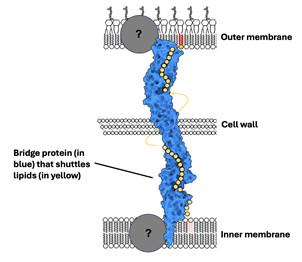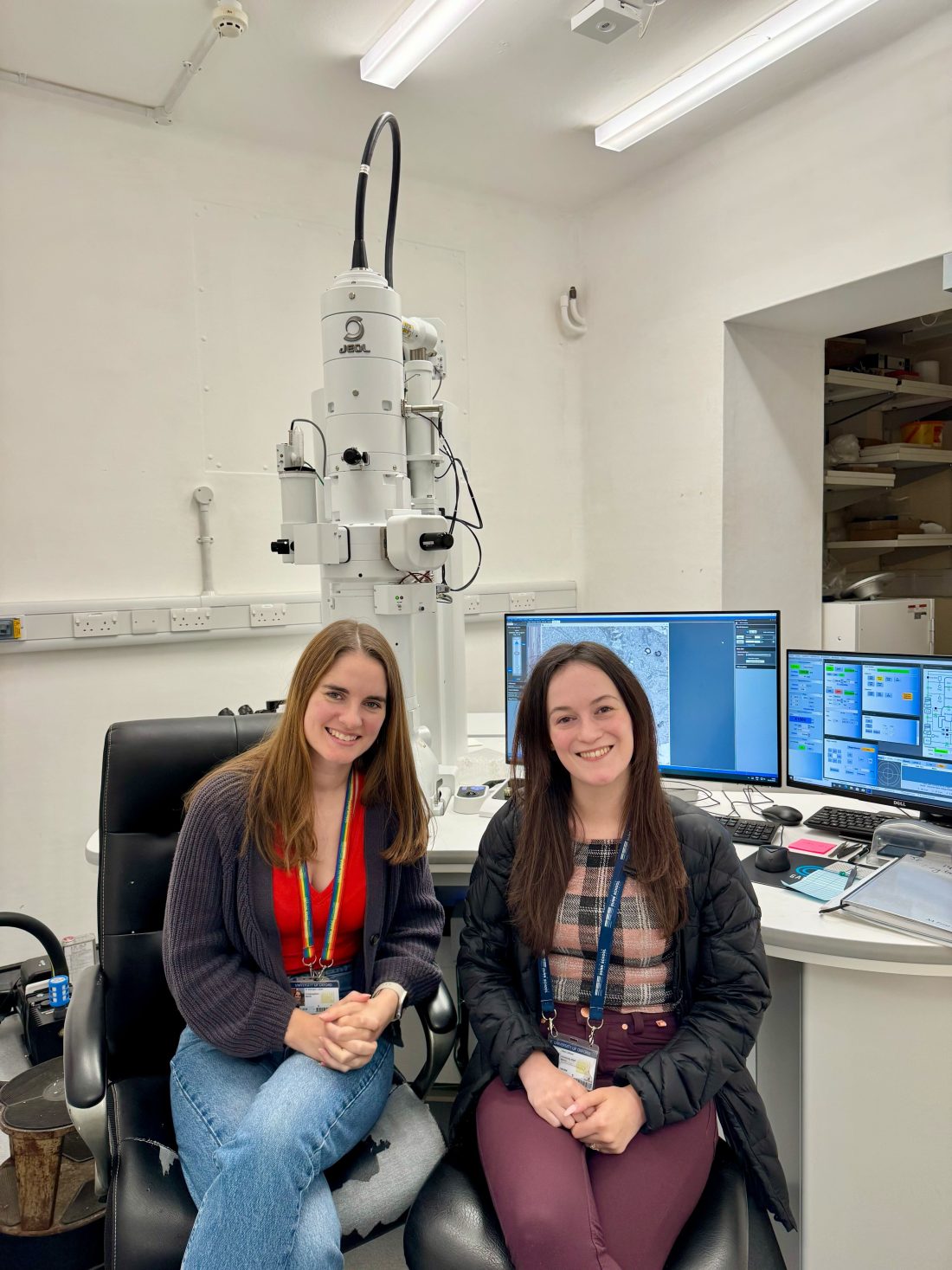Antimicrobial resistance research at the Dunn School receives 3-year funding boost

Proteins form bridges between the inner and outer membranes, to shuttle lipids that make up the membranes. When these proteins are removed from the cell, they are no longer under tension and become difficult to image.
Antimicrobial resistance (AMR) is one of the biggest health challenges of our time. It puts at risk many of the gains of modern medicine, not least those catalysed by the development of penicillin and cephalosporins here in the Dunn School.
Certain bacteria (known as Gram-negative bacteria) are particularly resistant to antimicrobials. This is in part due to the double layer of protection around them: two lipid membranes that can prevent the entry of antibiotics into bacterial cells.
To maintain these barriers, bacteria use transporter bridges that directly connect the two membranes. The group of Dr Georgia Isom uses a combination of structural, biochemical and microbial approaches to study these transporters and their role in resistance.
One of the technical challenges of resolving the structure of these transporters is that they lose their structural integrity when they are not stretched between the two cell membranes. The generous gift of the Wilkinson family will allow Dr Suzi Letham, a postdoc in the Isom group, to pilot the use of DNA origami to create scaffolds to maintain tension on transporters outside cells. This should facilitate cryo-EM structural analysis of these proteins and may also provide a roadmap for other researchers studying other medically important molecules that are also currently difficult to image.
“We are incredibly grateful for the generous donation from the Wilkinson family.” said Georgia and Suzi “The methodology we want to develop is not something easily funded from other sources, making this donation really impactful. It gives us the chance to develop cutting-edge methods to answer important biological questions, with huge benefit to the research field as well as our professional careers.”
The generous gift of the Wilkinson family will support the development of this project over the next three years. We were delighted to welcome Andrew, Juliet and their daughter to the Dunn School earlier this year, where they had the opportunity to meet Georgia and how this research is conducted in our labs.
“We were keen to support an up and coming lab doing highly experimental research that might otherwise be difficult to fund.” said the Wilkinson family “We saw a very specific connection between the funding and the project, which made it very interesting and rewarding for us, something that doesn’t always happen with much larger scale projects. After meeting Georgia, we felt like we’d be supporting both ground-breaking research and dynamic young scientists”

Dr Georgia Isom (L) and Dr Suzi Letham (R)
Isom lab
The Isom lab use a combination of structural biology, biochemistry and bacterial genetics to study Gram-negative bacterial membrane transport systems.
Infection & Immunity
Several Dunn School groups use a range of approaches to investigate antigen presentation and immune regulation during health and disease and study the mechanisms that enable bacterial and viral pathogens to invade and proliferate inside their hosts.
News
For research and social news from across the Dunn School read the latest on our news pages.